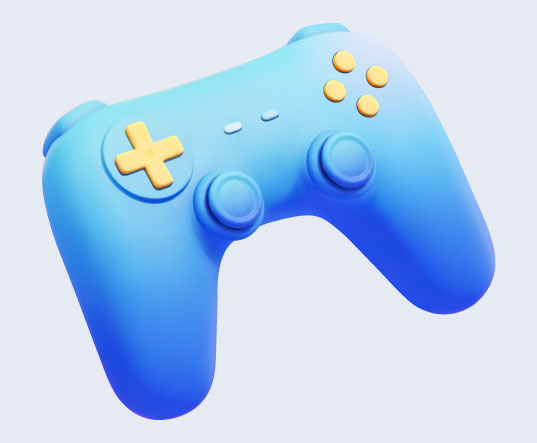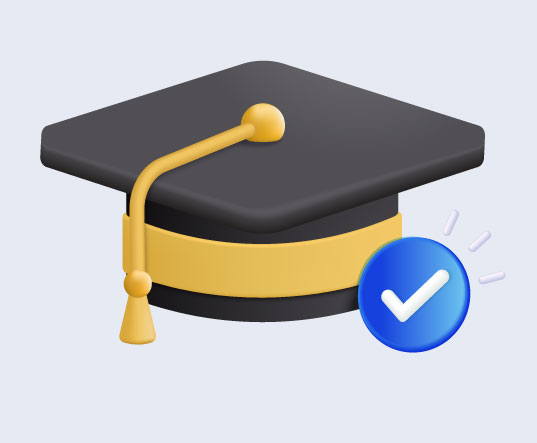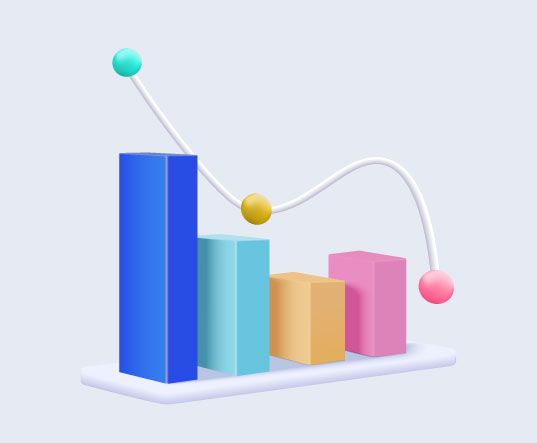.webp?2025-12-17T15:00:29.367Z)
Spotify Wrapped ideas make stats lovable

Gamification Statistics and Trends That Matter in 2025
Prudnikov Egor
As of 2025, companies are turning to gamification statistics to guide real decisions. Whether it’s scaling user retention, launching loyalty programs, or rolling out employee engagement gamification strategies, the role of game mechanics is growing, and fast.
From SaaS platforms improving onboarding to employee gamification programs driving workplace engagement, gamification is essential. As adoption increases in both B2C and B2B settings, the need for up-to-date, reliable gamification stats becomes critical for decision-makers.
This guide brings you the latest gamification trends and stats, updated to reflect new adoption rates, market growth, and behavioral outcomes.
7 Points That Prove Gamification Boosts Retention

Global Gamification Market
Gamification statistics is the first factor why you should consider implementing it. First of all, it is an entire industry. In 2025, it is estimated to reach USD 20.84 billion, with projections indicating a rise to approximately USD 190.87 billion by 2034, reflecting a CAGR of 27.9% .
his expansion is driven by the increasing adoption of gamification strategies across various sectors, including education, healthcare, retail, and enterprise applications. Notably, the retail industry accounted for a 28.5% revenue share in 2024, highlighting the sector's significant investment in gamified solutions to enhance customer engagement and loyalty.
The surge in mobile phone users and increased web traffic in the retail and e-commerce industries are also contributing to the adoption of gamification technologies, as businesses seek innovative ways to engage customers and enhance user experiences.
Since the gamification industry is expanding and more businesses use it, you will attract new customers by implementing it.
Gamification Engagement
Gamification is a great tool to impact engagement. In particular, gamification statistics indicated that it increases employee engagement by more than 40 percent. Another study revealed that gamification motivates them to be more engaged at work.
Improved knowledge retention is another advantage of gamification in retail and other sectors. This is accomplished by making more day-to-day and fundamental tasks, such as training, more entertaining so that employees can learn more and be interested in it. Gamify productivity is also popular among company owners because it gives more realistic problem-solving, facilitates more effective feedback, and allows employees to improve their skills with less risk.
By changing boring in-app features into a form of fun, you can increase user engagement. Additionally, people will remember more of the information shown to them within the app, which may enhance the user experience and promote longer-term engagement.
Gamification For Students

Gamification apps are an excellent tool for students, which gives more productive results. Students see it as a crucial component, and more and more Americans believe it is more successful than conventional training approaches. In fact, it can potentially raise student output by 50%.
As we know, kids are growing through games. So gamification has a significant impact on kids' performance. According to the case study, employing math games for four months increased exam results on average by 34%, going from 49% to 83%. These findings make it understandable why over 75% of primary school instructors in the United States incorporate gamification in their lesson plans.
Approximately 67 percent of pupils choose gamification for their educational experiences over others, more traditional teaching techniques. They explicitly identify motivation and engagement as the things that raise their interest in it.
These gamification statistics demonstrate how students interact with gamification and can be used for educational and non-educational applications that promote general learning. You may, for instance, have a productivity tool that aids in time management, or you may use it to guide individuals through lessons and demonstrate their progress, giving them interactive rewards along the way. Thanks to this, people will be able to learn more about the various features you provide and how to utilize the app.
Gamification For Brands
Gamification of brand experiences and marketing has helped several businesses enjoy phenomenal success in their respective industries. Gamification has been beneficial for a variety of companies, including both B2C and B2B. Its distinctively engaging app experience helped several of those companies achieve success with it.
B2C and B2B gamification examples include:
- Duolingo: The language learning program Duolingo leveraged gamification to increase its user base to more than 300 million people.
- Foursquare: Within a five-year span, Foursquare's mobile app increased ten times after adding gamification.
- Microsoft: Through gamified processes, Microsoft has witnessed a 3.5 times increase in employee engagement.
- Roblox: In 2018, Roblox introduced its Roblox Education program, contributing to the platform's annual surge in active users to over 90 million.
- Autodesk: This software provider employed gamification to boost conversion rates by 15% while improving trail utilization rates by 40%.
- Kenco: After utilizing a sales gamification tool, the logistics business Kenco reported a 45 percent boost in sales.
- KFC Japan: With the aid of Gamify, this KFC location created gaming content that boosted in-store sales by a remarkable 106%.
- Moosejaw: The gamified approach that Moosejaw implemented helped the brand advance in several ways: sales grew by 76%, ROI improved by 560%, and 240,000 social media impressions were generated.
- Kahoot!: With the aid of gamification, this Norwegian learning provider exceeded 90 million users and saw a growth of 75%, making it one of the fastest-growing international learning organizations.
These are just a few of the numerous businesses that have used gamification successfully in the past and present. Even without considering your app category or the in-app experience, these success stories alone demonstrate the advantages of implementing it.
Retail Gamification
Gamification has greatly impacted businesses’ ability to attract and keep clients in the retail industry. The worldwide gamification industry dominated by the retail sector is anticipated to increase by up to 25% by 2025. Gamification trends have also been proved to enhance engagement and loyalty by up to 30% for firms like Microsoft, Duolingo, and many others. It has also been demonstrated to increase customer acquisitions by a staggering 700%.
Despite gamification's clear advantages in the retail industry, most businesses aren't making the most of it. This is due to the fact that successful implementation might be difficult. Many businesses make the mistake of thinking they must develop a mobile app expressly for gaming, which can be expensive and time-consuming.
According to different surveys, 70% of customers had experimented with various products throughout the Covid-19. In a post-pandemic environment, 55% of these customers also intend to adopt new brands into their life. Since consumer behavior is evolving, it's critical for both app developers and merchants to promote brand loyalty.
Gamification for Employees
The use of employee gamification has expanded rapidly in recent years, especially in hybrid and remote-first workplaces. Companies are leveraging game mechanics not just to increase productivity, but to boost employee engagement, foster learning, and support team cohesion.
According to Build Empire, over 70% of large enterprises now use gamification in at least one HR or learning & development system. This includes everything from points-based performance dashboards to mission-driven onboarding programs and internal learning platforms with unlockable content.
Why it works:
- Engagement: Gamification taps into intrinsic motivation: challenge, recognition, progress.
- Transparency: Employees can track performance, skill development, or milestones in real time.
- Retention: When used in recognition programs, gamified systems help reduce churn and burnout.
Examples include:
- Salesforce’s Trailhead badges for learning pathways
- Deloitte’s gamified leadership training simulations
- Microsoft’s internal cybersecurity games used to promote awareness
Employee engagement gamification is about making growth visible, interactive, and rewarding. When designed well, these systems enhance learning outcomes and align workforce behavior with company goals.
Gamification As a Self-Fulfillment
Gamification works because it taps into core human psychological needs. At its foundation, gamification satisfies intrinsic motivators such as autonomy, mastery, purpose, and recognition.
When designed well, gamified experiences create the “flow state” — a condition of deep focus and satisfaction where users lose track of time and become fully immersed in the task at hand. This concept, introduced by psychologist Mihaly Csikszentmihalyi, is one of the most studied effects in motivation science.
Gamification leverages this flow by setting clear goals, offering real-time feedback, and creating balanced challenges. But the effect goes further.
We are wired to pursue achievement, progress, and recognition. In this sense, game elements like points, levels, challenges, and rankings are not superficial add-ons. They offer users a sense of direction and accomplishment, fulfilling a deeply rooted need for personal growth.
This is especially evident in contexts like:
- Learning platforms that reward skill acquisition
- Fitness apps that use streaks and milestones to promote consistency
- Workplace tools where performance dashboards foster healthy competition
By introducing structured challenges, visual progress indicators, and social comparison mechanisms, gamification reinforces a sense of self-competence and belonging — both of which are critical to sustained engagement.
Gamification Best Practices

This and other gamification statistics demonstrate that gamification is one of the best tools available to business owners and developers. The trick is understanding how to integrate it properly into your app or product experience, especially when it comprises activities that are not connected to games.
These simple tips will help you to create a proper gamification strategy:
Set objectives
Make sure to define success before you gamify productivity. It might be challenging to say when—or even if—success is achieved if objectives are not precisely defined. Success is a fluid term that may change and evolve over time, so marketers should define goals each time before implementing gamification.
Understand your needs
While every training and learning project should be connected to a company's needs, gamification makes this even more crucial. Don't just use gamification apps to promote irrelevant material for the organization or the person. Ensure that you are addressing business needs.
Motivate
Sharing a vision of the company and explaining why, how, and what for the employees or users is a highly powerful way to motivate them. You should understand the motivations behind the student’s attempts to collect points, compete with each other, and look for hidden rewards. Give students reasons for wanting to engage with the material.
Implement gamification theory
Spaced retrieval and retrieval practice are two effective gamification trends and techniques. They work by giving users quizzes or course material that is spaced out across time. Spaced retrieval establishes that the capacity for retention increases with the length of time between retrieval events.
Contrarily, retrieval exercise challenges learners to understand and remember the information rather than just review or listen to it again, and it can increase memory performance by up to 10% to 20%.
Use reward system
At the moment, badges and leaderboards are frequently seen as the replacement for loyalty programs and rewards. As participants complete a course or program, they are rewarded with graphic badges. They aid in progress demonstration and increase the visibility of gradual learning. Provide a location where students may visibly display badges whenever feasible to maximize the social benefits of gamification.
Gamification should be fundamentally social and effortlessly incorporated into social media platforms so that users may inspire their peers and celebrate their accomplishments.
Keep everything simple and fun
Complexity is not a friend in any type of education, especially when it comes to gamification trends implementation. You should avoid overcomplicating tasks and keep them simple and entertaining. Make sure to provide a tutorial so that users may understand the rules from the beginning of the game. The objective is for learners to remember the course material, not the particulars of the rules.
Consider microlearning
Microlearning is a technique that employs brief periods of learning to boost engagement, performance, and development. All information enters the brain rapidly and in little fragments; this is how people instinctively remember the information. And gamification should have a similar effect on users. When you merely offer the knowledge required to go to the next step, this is referred to as cascading information theory game mechanism. With such a gamification trend, a sophisticated 100-page book is bearable.
Gamification has been described as "75 percent psychology, and 25 percent technology," which is absolutely true in practice. Since gamification trends combine the fun of playing a video game with learning a new skill, it is more than just silly video games branded with your logo.
Gamification has shown to be a reliable educational tool, offering all the components of engagement and improved performance. If it is appropriately used, gamification may help organizations and their staff flourish in a stressful environment.
General tips
You should find a method to differentiate your app or product. Given the number of applications available today, many of which offer a similar experience, the app’s uniqueness may increase the chances of success. In addition, you may separate yourself from rivals that ignore gamification by providing consumers the option to convert every work into a fun and engaging game. Through gamification, you may provide a wholly unique experience for every user, thanks to today's personalization possibilities.
Conclusion
Gamification has gained popularity across all demographics throughout time, from employees and students to the typical consumer. The popularity and efficiency of it, resulting in gamification market expansion. This gamification statistic suggests that the market won't be slowing down anytime soon, so if you want your business to succeed, you must use it.

